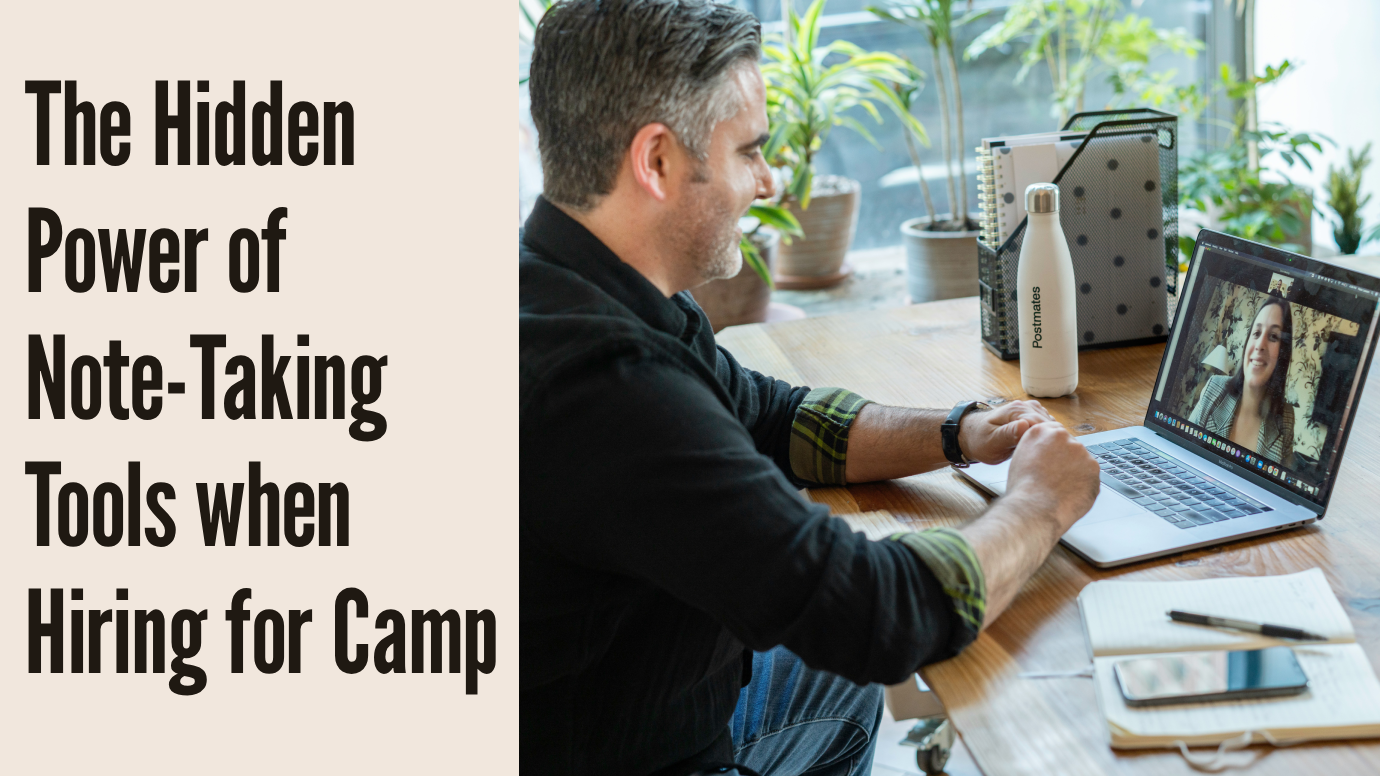The Hidden Power of Note-Taking Tools when Hiring for Camp
Why recording and transcription tools are becoming must-haves for modern recruiting.
If you’ve ever tried to manage dozens of interviews at once, you know how quickly details blur together. Notes get lost, stories blend, and memory becomes unreliable. That’s where tools like Otter.ai come in. Originally built to take meeting notes, they’ve quietly become one of the most valuable—and underused—recruiting tools in camp hiring. At CampHire, we stumbled into this by accident. Our Otter “bot” started showing up to every meeting—candidate calls, client check-ins, and internal debriefs. Suddenly, we had transcripts and recordings of everything. Once we got over how weird it felt, we realized how powerful it was.
These tools don’t just help you remember what was said. They help you run a more equitable, organized, and efficient hiring process.
Key Takeaways
Recording tools like Otter.ai create accountability and consistency across interviews.
They help train interviewers and align teams on candidate evaluation.
They save time for directors, boards, and committees who can review on their own schedule.
They support equitable hiring by standardizing the candidate experience.
How Note-Taking Tools Improve the Hiring Process
1. Better recall and accuracy
No more scribbled notes or “I think she said…” moments. You can revisit any conversation and hear what was actually said—especially helpful when you’re comparing top candidates or debriefing with your team.
2. Interviewer training and consistency
Recording interviews gives directors a way to coach assistant directors and hiring teams. You can listen for tone, pacing, and consistency. It’s one of the simplest ways to improve interviewer performance and ensure every candidate gets the same experience.
3. Collaboration with boards and committees
If you’re hiring an executive or senior director, recordings can save hours of recap meetings. Share top-candidate interviews with your board so everyone has firsthand context before making a decision. It’s a game-changer for volunteer-led searches.
4. Speed and accessibility
You can listen on double-speed while walking the dog or driving to camp. Everyone enters the next hiring meeting already informed, which cuts down on redundant rounds of interviews and long back-and-forth discussions.
How to Use Otter (and Similar Tools) Wisely
Always get consent. Let candidates know the interview will be recorded for internal note-taking only.
Keep transcripts organized. Label files by role and date so they’re easy to find later.
Use summaries, not scripts. Rely on AI highlights to capture key skills and themes rather than word-for-word transcripts.
Coach with context. When sharing recordings with staff, focus on learning and process improvement, not critique.
Why It Matters
Hiring for camp is chaotic by nature—multiple roles, high volume, and fast decisions. Tools like Otter give you structure and visibility without slowing you down. They also improve fairness by ensuring every candidate is evaluated on the same information.
For about $9 a month, it’s one of the cheapest, easiest ways to upgrade your hiring process.

